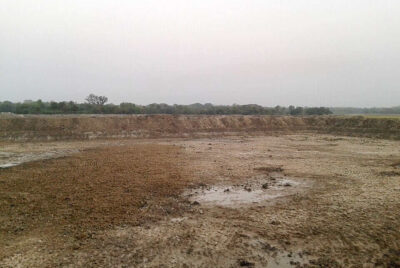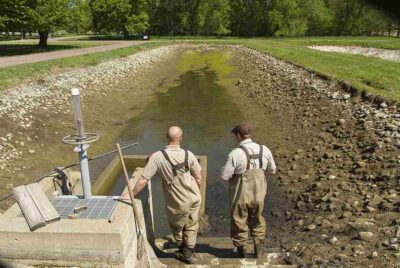How to Build a Dock in a Pond
Living close to water bodies such as ponds or lakes is a delight. These natural features provide an excellent space for numerous recreational activities like fishing, swimming, and kayaking. However, navigating these waters can be a challenge without the right infrastructure. This is where docks come in. In this comprehensive guide, we’ll outline step-by-step instructions on how to build a dock in a pond, turning it into an oasis of relaxation and fun activities.
Understanding Docks and Their Types
Before we delve into the process of building a dock, it’s crucial to understand what a dock is and the different types available. Essentially, a dock is a structure extending over a body of water, used as a landing platform for boats or an area for fishing and swimming.
There are two primary types of docks: floating and fixed docks. Floating docks, as the name suggests, are designed to float on the water’s surface. They’re particularly suitable for bodies of water where the level fluctuates significantly. Fixed docks, on the other hand, are built above the waterline at a constant height, typically on a permanent foundation made of concrete, steel, or wood.
Floating Docks: A Closer Look
Floating docks have gained popularity due to their versatility and adaptability to varying water conditions. These docks sit on the water’s surface, making them ideal for ponds and lakes where the water level often changes. They are particularly suitable for man-made water bodies where water levels depend on weather conditions, often fluctuating by several feet.
The floating design also offers advantages for deep water bodies, as building a fixed dock in such conditions can be expensive and complicated. It’s the same for water bodies with a silty floor, which can make constructing a stable foundation challenging. Floating docks bypass these issues, providing a practical and cost-effective solution.
Fixed Docks: An Alternative Option
While floating docks are versatile, they aren’t suitable for all situations. For instance, bodies of water with high wave action or strong currents may require fixed docks. These structures are also ideal for shallow waters (less than 5 feet deep) where a floating dock could end up resting on the water body’s floor.
How to Choose the Right Dock for Your Pond
Choosing between a floating dock and a fixed dock depends on several factors, including the water type and depth, water fluctuation, shoreline profile, soil composition, and intended use. Here are a few considerations to help you decide the right dock for your pond:
- Water Fluctuation: If your pond’s water level tends to fluctuate, a floating dock would be a more suitable choice. It adjusts to changing water levels, ensuring usability regardless of weather conditions.
- Water Depth: For deep water bodies, a floating dock is a better option. Building a fixed dock in deep water can be complex and expensive.
- Soil Composition: If your pond has a soft or silty bottom, a floating dock would be more practical. Constructing a stable fixed dock in such conditions can be challenging.
- Intended Use: Consider how you plan to use your dock. If you’ll be using it for fishing, a floating dock is advantageous as it provides easy access to the water.
Building Your Dock: A Step-by-Step Guide
Now that we’ve covered the basics of docks and how to choose the right type for your pond, let’s delve into the process of building your dock. This guide will focus on building a floating dock, considering its versatility and suitability for various water conditions.
Step 1: Planning and Designing Your Dock – (How to Build a Dock in a Pond)
Before you start the construction process, it’s crucial to plan and design your dock. Determine the size of the dock you need and the materials you’ll use. Keep in mind that your dock’s size and design should align with its intended use and the pond’s conditions.
Step 2: Gathering the Necessary Materials – (How to Build a Dock in a Pond)
Once you’ve finalized your dock’s design, gather all the necessary materials. These typically include decking boards, floats, nuts, and bolts. Consider using synthetic or composite decking materials like Trex or WearDeck for durability and ease of maintenance.
Step 3: Constructing the Dock Frame – (How to Build a Dock in a Pond)
Begin the construction process by building the dock frame. This serves as the base of your dock, ensuring its stability and durability. Make sure to construct your frame according to the dimensions of your design plan.
Step 4: Attaching the Floats – (How to Build a Dock in a Pond)
With the frame complete, it’s time to attach the floats. These buoyant devices keep your dock afloat, making them a crucial component of a floating dock. Ensure the floats are securely attached and evenly distributed across the frame for optimal floatation and balance.
Step 5: Installing the Decking Boards – (How to Build a Dock in a Pond)
After attaching the floats, install the decking boards on top of the frame. These boards form the walkable surface of your dock. Make sure the boards are securely fastened to the frame, creating a solid and safe platform.
Step 6: Adding the Final Touches – (How to Build a Dock in a Pond)
Once your dock is fully assembled, add the final touches. This could include installing a ladder for easy access to the water or adding railings for safety. You could also consider adding some seating or a table for convenience.
Conclusion
Building a dock in a pond considerably enhances the recreational scope of the water body. Whether you prefer a peaceful fishing session or a vigorous swim, a dock provides easy access to the water, making these activities more enjoyable. With this comprehensive guide, we hope you’re now better equipped to build your own dock and transform your pond into a hub of fun and relaxation.
Frequently Asked Questions
Q: What is the difference between a floating dock and a fixed dock?
A: A floating dock floats on the water surface and adjusts to changing water levels, making it ideal for water bodies with fluctuating water levels or deep waters. A fixed dock, on the other hand, is built at a constant height above the waterline, making it suitable for shallow waters or water bodies with high wave action.
Q: What are the benefits of a floating dock?
A: Floating docks are versatile, affordable, and customizable. They move with water fluctuations, providing easy access to the water regardless of weather conditions. They’re also easier and cheaper to build than fixed docks.
Q: What materials do I need to build a dock?
A: Building a dock typically requires decking boards, floats, nuts, and bolts. You might also need additional materials like ladders or railings, depending on your dock’s design.
Q: Can I build a dock in a pond with a soft bottom?
A: Yes, a floating dock is ideal for ponds with soft or silty bottoms. Since it floats on the water’s surface, it bypasses the challenges of constructing a stable foundation in such conditions.
Q: How can I choose the right dock for my pond?
A: Choosing the right dock for your pond depends on several factors, including water depth, water fluctuation, soil composition, and intended use. Floating docks are typically more versatile and suitable for varying water conditions.




